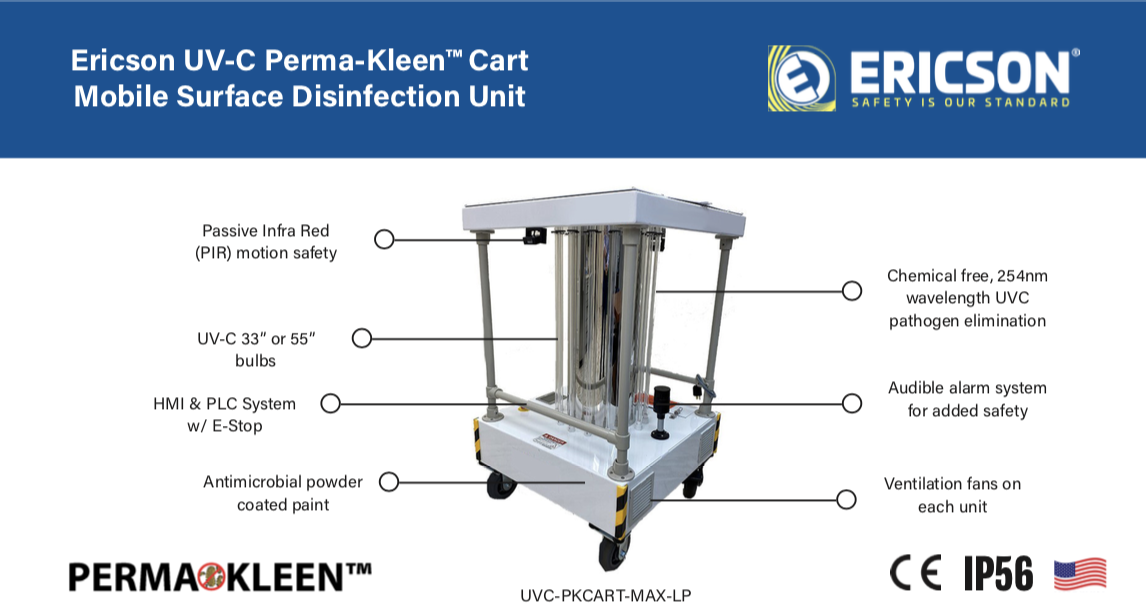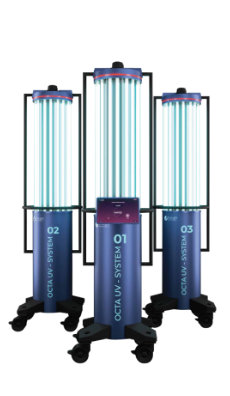Unleashing the Power of UV Surface Disinfection: Guarding Against Dangerous Pathogens
Utilizing the Possible of UV Sanitation: Safeguarding Wellness and Health
As the globe grapples with the continuous pandemic and the constant threat of contagious illness, the relevance of keeping health and wellness and hygiene has never been extra obvious. In this context, using the capacity of UV disinfection arises as an encouraging option. UV sanitation, an innovation commonly made use of in different markets, has proven efficient in eliminating harmful microorganisms. Nonetheless, there is a lot more to explore behind the science of UV disinfection and its applications. From comprehending the mechanisms at play to applying this modern technology in our everyday lives, this conversation intends to clarify the potential of UV disinfection and its duty in securing our wellness and hygiene.
Comprehending UV Sanitation
UV sanitation is a very efficient and widely utilized approach for getting rid of hazardous microorganisms and making sure wellness and health. This technique makes use of ultraviolet (UV) light to suspend bacteria by harming their DNA and stopping them from duplicating. UV disinfection is specifically effective against bacteria, infections, and other microorganisms that can trigger infections and illness.
The principle behind UV sanitation is easy yet effective. UV disinfection can be used in numerous setups, consisting of water treatment plants, healthcare centers, food handling industries, and air filtration systems.
One of the advantages of UV sanitation is its ability to efficiently and successfully get rid of a wide variety of microorganisms without the need for chemicals or additives. Unlike other sanitation methods, such as chlorine or ozone, UV sanitation does not present unsafe byproducts or chemical deposits right into the setting. Additionally, UV sanitation is a non-contact procedure, which indicates that it does not need physical call with the microbes, decreasing the threat of cross-contamination.

The Scientific Research Behind UV Disinfection
The effectiveness of UV disinfection lies in its capacity to interfere with the hereditary product of microbes, making them unable to reproduce and therefore eliminating their unsafe potential. This high-energy UV-C radiation is most efficient in disinfection applications due to the fact that it can pass through the cell walls of bacteria and damage their DNA or RNA.
When microorganisms are exposed to UV-C radiation, the energy is taken in by their genetic material, causing bonds to damage and developing chain reactions that disrupt their capability to recreate. This protects against the microorganisms from reproducing and spreading infection. UV disinfection is especially effective against fungi, bacteria, and viruses, including common virus such as Escherichia coli, Salmonella, and Influenza.
The science behind UV sanitation is supported by comprehensive research study and studies. It has been revealed that exposure to an adequate dosage of UV-C radiation can accomplish a high level of disinfection, usually going beyond 99.9% efficiency in eliminating bacteria. It is crucial to note that the performance of UV disinfection depends on different aspects, consisting of the strength of UV-C radiation, direct exposure time, range from the UV source, and the vulnerability of the bacterium to UV radiation (uv surface disinfection).
Applications of UV Sanitation
Offered the considerable study and effectiveness of UV sanitation in interfering with the hereditary product of bacteria, it is very important to explore the various functional applications of this innovation. UV disinfection has proven to be a beneficial device in a large range of markets where preserving a tidy and risk-free atmosphere is essential.
One significant application of UV disinfection remains in healthcare settings. UV light can be utilized to decontaminate surfaces, devices, and even the air in medical facilities and medical facilities. This aids to minimize the danger of healthcare-associated infections and guarantees a much safer environment for clients and health care employees.
An additional important application click site remains in the food and drink market. UV sanitation is used to deal with water and eliminate damaging virus, such as E. coli and Salmonella, from the manufacturing procedure. uv surface disinfection. This guarantees the security and high quality of the items we eat
UV disinfection is also commonly used in water therapy plants and wastewater treatment facilities. It is an efficient method for ruining dangerous germs, viruses, and bloodsuckers that can be existing in water sources. This assists to give tidy and safe drinking water to communities and shield the atmosphere from pollution.
Furthermore, UV disinfection is utilized in the pharmaceutical sector to sterilize devices and keep the integrity of products. It is additionally used in labs and study facilities to prevent Click This Link contamination and guarantee precise outcomes.
Advantages of UV Disinfection Innovation
One notable benefit of using UV sanitation modern technology is its capacity to properly remove microorganisms without making use of rough chemicals. This is particularly useful in various setups, such as healthcare centers, water treatment plants, and food processing sectors, where the visibility of damaging microorganisms presents a considerable risk to public health and safety.
Unlike conventional sanitation methods that depend on chemicals like chlorine or ozone, UV disinfection modern technology uses ultraviolet light to target and destroy the DNA of microbes, effectively counteracting their ability to replicate and create infections. This procedure not only removes the demand for possibly unsafe chemicals yet also decreases the threat of chemical residue or by-products continuing to be in the treated setting.

Moreover, UV sanitation innovation is eco-friendly. As it does not depend on the web use of chemicals, it removes the demand for their transportation, production, and disposal, decreasing the overall carbon impact linked with disinfection procedures. Furthermore, UV sanitation systems have a longer life expectancy compared to chemical-based techniques, resulting in much less regular replacement and additional minimizing waste.
Executing UV Disinfection in Every Day Life
To efficiently execute UV disinfection in every day life, organizations and people can integrate portable UV sanitizing tools right into their health regimens and cleansing techniques. These tools are created to send out ultraviolet light, which has been verified to kill or inactivate a large range of microorganisms, including viruses, fungi, and bacteria. By utilizing mobile UV disinfecting tools, individuals can sanitize typically touched surface areas and things, such as mobile phone, doorknobs, tricks, and laptop computers, lowering the danger of spreading germs and infections.
In addition to incorporating mobile UV disinfecting tools, it is very important to follow proper guidelines and recommendations for efficient UV sanitation. This includes making certain that the tool is made use of correctly and for the advised duration to accomplish optimum sanitation outcomes. It is additionally crucial to prioritize precaution, such as wearing safety glasses and avoiding direct exposure of the UV light to the skin.

Additionally, companies can implement UV disinfection innovation in different setups to boost hygiene practices. Health centers and medical care facilities can use UV sanitation robotics to sterilize client spaces, operating cinemas, and other high-touch areas. Food handling sectors can incorporate UV sanitation systems right into their manufacturing lines to enhance food safety and prevent contamination.
Verdict
In conclusion, UV disinfection modern technology holds fantastic potential in securing health and health. With its many benefits, UV sanitation is a valuable tool for keeping a healthy and balanced and tidy setting.
Unlike other sanitation approaches, such as chlorine or ozone, UV sanitation does not present hazardous byproducts or chemical residues right into the environment. It is crucial to keep in mind that the efficiency of UV sanitation depends on various aspects, consisting of the strength of UV-C radiation, exposure time, distance from the UV source, and the vulnerability of the microorganism to UV radiation.
An additional benefit of UV disinfection modern technology is its capability to supply rapid and continuous disinfection. Unlike handbook cleansing approaches, which can be taxing and call for substantial labor, UV sanitation systems can be automated and run constantly, ensuring constant sanitation without human intervention.To successfully apply UV disinfection in everyday life, organizations and individuals can incorporate mobile UV sanitizing tools into their health regimens and cleaning practices.